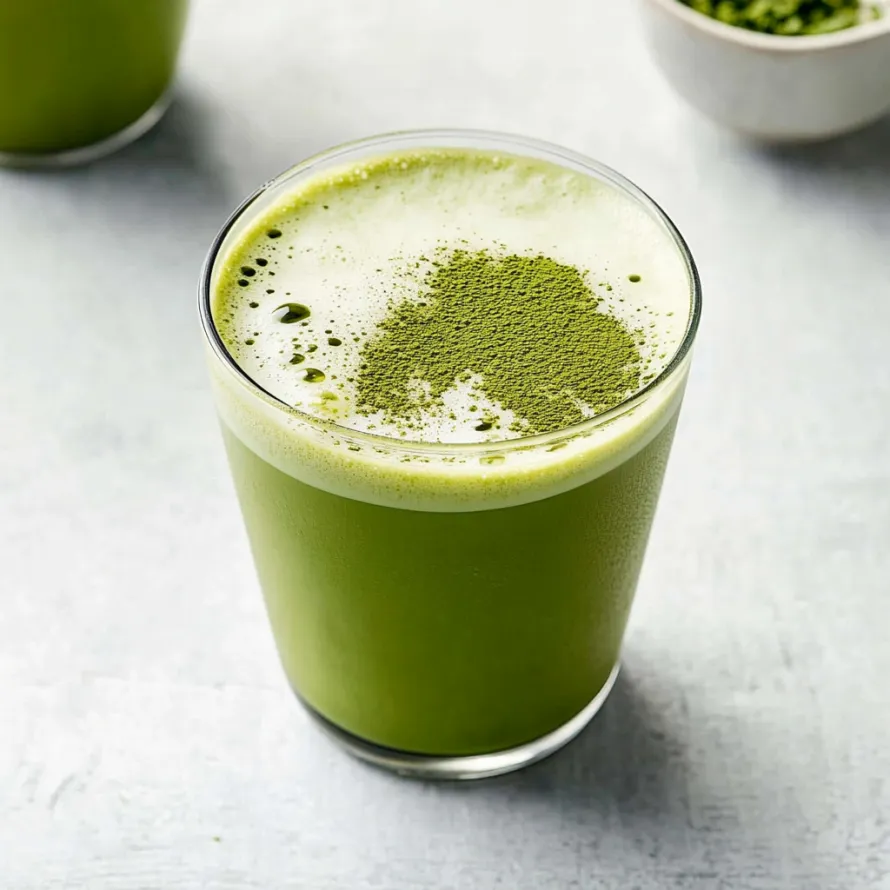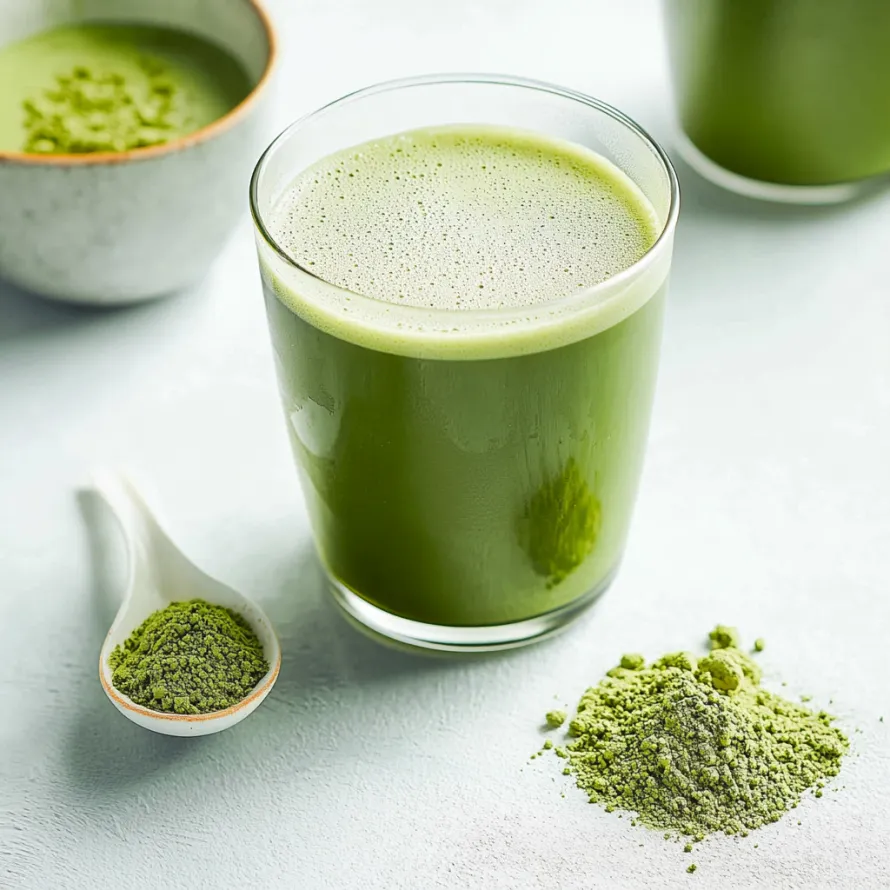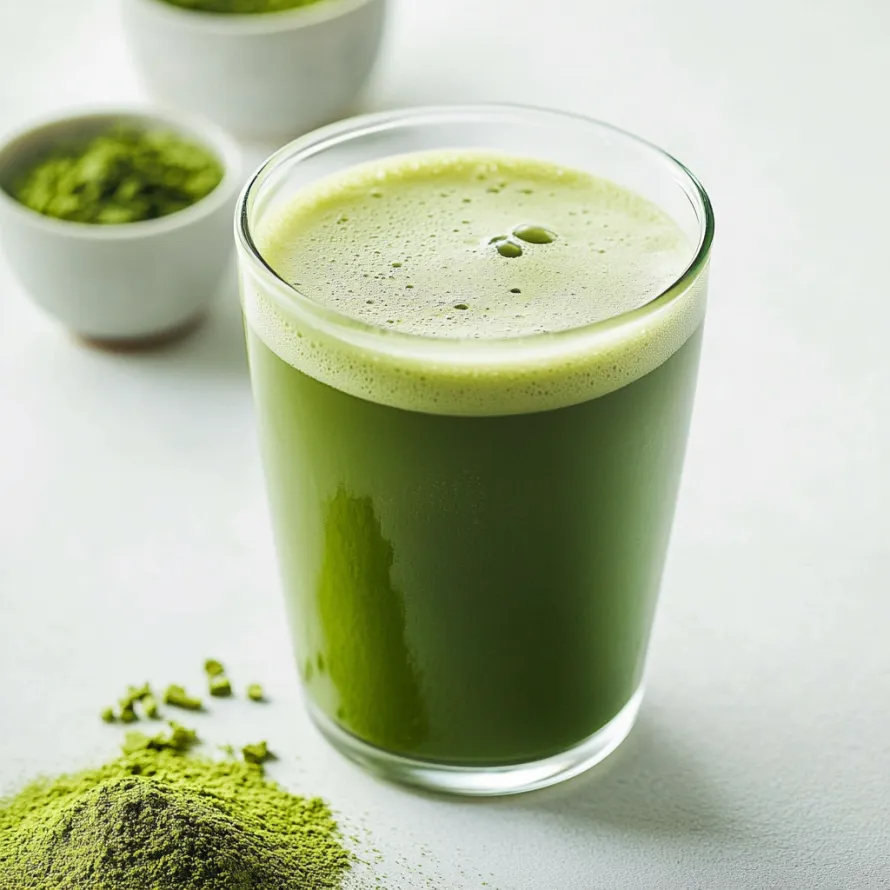 Pin it
Pin it
Powdered Japanese green tea starts as leaves, finely milled into a glowing, emerald powder that gets whisked right into your drink. Instead of steeping leaves then tossing them out like in most green tea, matcha actually becomes part of what you sip, so each cup packs extra flavor, color, and nutrients. Its earthy, slightly sharp taste stands out—no wonder it’s gone way beyond ceremonies and is now a favorite with cooks and health fans everywhere.
First tried matcha when my job was super overwhelming and couldn’t believe how alert I felt—minus the caffeine crash of coffee. Now, every morning starts with my trusty bowl and whisk. That frothy, green pick-me-up just gets me grounded and ready for whatever comes.
Top-Tier Quality
- Texture Factor: Powder should feel silky, so it disappears easily in drinks, not gritty or clumpy.
- Aroma Check: A fresh, springy smell is what you want—dull or odd scents signal it’s stale or kept wrong.
- Color Pop: Bright, lively green means it’s fresh and well cared for, so pass if it looks faded.
- Culinary Grade: A bit bolder and punchier, just right for baking or using in dishes where you want the flavor to shine through.
- Ceremonial Grade: Made from tender, young leaves, it feels smooth and deliver a gentle taste, ideal for a traditional cup.
Classic Approach
- Finishing Touch:
- Top it up with more hot water if you want it as a drink, or steamed milk if you’re going latte-style. Some folks like a touch of sweetener, but honestly, the complex taste rocks on its own.
- Foam Game:
- Keep whisking until you see enough light froth on top—that means you’ve blended the powder perfectly and made sure the flavor’s well-extracted.
- Whisk it Right:
- Pour about two ounces of hot water (but not boiling!) over the sifted tea. Move your whisk back and forth quickly in a zigzag, not circles, to make it foamy.
- Heat Smarts:
- Don’t boil the water—stick to around 175°F or 80°C, so you don’t end up ruining the delicate flavors or making it taste harsh.
- Measuring Up:
- Grab a small scoop and use about one teaspoon of high-quality matcha, then sift it so you don’t end up with clumps that won’t mix in easily.
- Gear Up:
- Get a roomy bowl for whisking, and your bamboo whisk—it’s what gives that perfect frothy finish with all those skinny tips.
 Pin it
Pin it
When I was a kid, my grandma always made traditional Japanese treats flavored with matcha for our family get-togethers. Back then, I only liked them if they had something sweet next to them. Now I’ve come to really enjoy how matcha adds depth and keeps desserts interesting instead of just sugary.
Tasty Pairings
Matcha goes awesome with flavors that bump up its best qualities. White chocolate brings creamy sweetness that smooths out any bitterness but doesn’t steal the show. Coconut adds a light, tropical hint that works well with the green tea notes. Vanilla is a total team player, tying matcha together with everything else for a richer final dish.
Fun Ideas
For breakfast, just mix a little matcha into overnight oats with sliced banana and honey for energy that sticks. For a cool twist, stir sifted matcha into pound cake batter before baking—it’ll swirl in some color and flavor. When it’s warm out, homemade ice cream with matcha is a smart way to wow your guests while adding something cool and unique.
Smart Storage
Keep your matcha in the fridge, away from any heat, light, or moisture—otherwise, the color and taste will fade quick. If you can, store it in a small, dark glass jar to block out the bad stuff. And don’t save it forever; once you open it, use it up within two months so it doesn’t end up bitter or dull.
 Pin it
Pin it
I started using matcha just to be healthier, but it turned into something I love exploring in the kitchen. There’s just nothing else that brings earthy, deep flavor and fresh brightness at the same time. It always surprises me how matcha can boost both savory and sweet dishes. It’s honestly a must-try for any home cook looking to up their game.
Frequently Asked Questions
- → Can I get by without a bamboo whisk for making matcha?
- You’ll get the best foam with a bamboo whisk (chasen), but if you’ve only got a small whisk in your kitchen, use that. Bamboo breaks up lumps and gives great froth.
- → Why is my matcha kind of bitter?
- If your water’s too hot or the matcha’s not so great, you’ll notice bitterness. Try water at 175°F, hunt down better matcha, or just add a touch of sweetener.
- → Can you prep matcha before you need it?
- Fresh matcha tastes way better. It gets weird and settles if you let it sit, so whip up a new cup every time.
- → How’s matcha different from regular green tea?
- Matcha uses shade-grown tea leaves ground into powder. You drink all of it, not just an infusion, so you get more nutrients and caffeine than with regular green tea leaves.
- → How should I keep my matcha powder?
- Keep your matcha in something airtight, stash it in the fridge, and protect it from light, heat, moisture, and smelly stuff. It’s best within a month or so of opening.
- → Is it cool to use matcha in baking or cooking?
- Totally! Matcha’s awesome in smoothies, cakes, ice cream, and beyond. For baking and drinks, culinary matcha is great and costs less than the fancy stuff.
